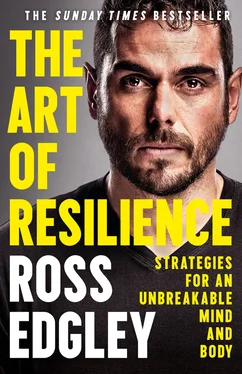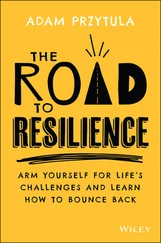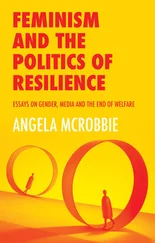Many believed the mind would quit …
Others believed the body would break …
But of all the naysayers, the most vocal were sports scientists within the swimming community who were quick to point out that my chunky five foot eight, 88 kg frame would never make it around; that with such short, stubby arms and legs it was obvious that the laws of hydrodynamics (the study of objects moving through the water) were not in my favour.
I was well aware of this, too. Months before arriving in Margate, I visited a sports laboratory for a full medical examination to see if my body could survive a swim of this magnitude. After hours of being prodded and probed I was told in no uncertain terms that I had ‘no physical attributes to be an elite swimmer’. They also added, I would likely, ‘sink like a stone’ if I embarked on this ill-fated swim.
But it gets worse …
Entering the room that day, the chief sports scientist picked up the clipboard containing my scan results. Looking me up and down he said, ‘You’re very heavy … but also very short.’
Harsh, but true, I thought.
‘That’s not good,’ he continued, now frowning as if the stubby statistics of my body were offending him and his laboratory. ‘But if I can be honest with you, it’s your body composition that concerns me the most. Since fat is buoyant and insulating, and you have very little, and muscle sinks, and you have a lot. Basically, floating and keeping warm is going to be an issue for you, never mind swimming.’
I nodded and thought this must be the most brutal assessment of a body in the history of swimming. But I wasn’t out of the woods yet. His confidence-crippling critique of my body continued and this time he had an issue with specific body parts.
‘Also, it’s your head,’ he continued.
‘What about my head?’ I said, now feeling a bit self-conscious.
‘It’s big and dense,’ he declared bluntly.
‘I know I’ve a big head, but—’ I was interrupted before I could defend my oversized cranium.
‘Yes, but it’s not just big. It’s very dense ,’ he said gesturing with his hands. ‘In fact, all your bones are dense, but my concern is when swimming, because of the position and size of your head, you’re basically turning yourself into a human submarine, as the weight of your massive skull plummets you into the ocean bed.’
He then continued to flick through the pages of notes, surveying the metrics while continuing to tell me I had one of the densest skulls he’d ever seen. Moments later (and five pages in) we found a statistical silver-lining.
‘Oh wait,’ he said. ‘There might be some good news.’
I breathed a sigh of relief.
‘You have brilliant … fat … chunky … child-bearing hips.’
‘WHAT?’ I had no idea how this was good news, but decided it was better than a massive submarine skull so decided to listen.
‘You carry your fat around your thighs like a woman,’ he said, again gesturing with his hands. ‘What this means is despite your big heavy head sinking, your fat thighs will float … almost like a duck’s bum.’
He paused to consider his final diagnosis. ‘If you want my advice, I’d stop strength training. Lose muscle. Obtain a body that more closely resembles that of a swimmer. Then try and swim around Great Britain in a few years, because right now I’m not sure you could walk around never mind swim around.’
Sitting there, I agreed with everything he said apart from this hips ‘prescription’.
I do have a heavy head and child-bearing hips, but – completely contradictory to conventional sports science – I would argue that despite being a super-sized sumo-swimmer, these would uniquely equip me to swim around Great Britain.
Why was I so sure? Because his diagnosis was based on an elite swimmer competing in a 100 m or 10 km race and not someone attempting to swim 1,780 miles around several countries. This was the fundamental difference, since I was aware that being a leaner and lighter swimmer would make me faster, but I was also aware that being heavier and stronger would make me more robust.

Studies in strength agreed, too. Research from the National Strength and Conditioning Association (NSCA) stated, ‘When considering sports injury prevention strategies, the role of the strength and conditioning coach can extend beyond observing exercise technique and prescribing training to develop a robust and resilient athlete.’ 2
This is true in swimming and other sports. As early as 1986, research published in the Journal of Sports Medicine found that, ‘The incidence of various types of overuse injuries, such as swimmer’s shoulder and tennis elbow, may be reduced by the performance of resistance training activities.’ 3How? Scientists added, ‘Resistance training promotes growth and/or increases in the strength of ligaments, tendons, tendon to bone and ligament to bone junction strength, joint cartilage and the connective tissue sheaths within muscle. Studies also demonstrate resistance training can cause increased bone mineral content and therefore may aid in prevention of skeletal injuries.’ 4
Now every athlete is, of course, different. Equally, there are thousands of incredible (and specific) treatments performed by world-leading physiotherapists, osteopaths and injury prevention specialists that are being used to treat thousands of specific intricate injuries, and in no way am I attempting to gloss over these. But evidence suggests – as you will see in a later chapter – that on a large scale across sports, countries, age groups and gender, strength training could hold the key to creating robust and resilient humans .
This (I believed) would be a deciding factor of the swim, because if I was to miss just a few days of perfect swimming conditions due to injury, I could also miss up to 100 miles of progress. Therefore, speed was an advantage, but physical resilience was a necessity.
Of course, many disagreed with this theory. But do you know who agreed with me? Barry. Yes, Barry always believed in me. A local fisherman from Margate, he was 65 years old and had lived here all his life. When news reached his local pub that someone was about to attempt to swim around Great Britain, he and his friend George came down to the harbour to watch the start of the swimming spectacle unfold.
Looking me up and down (like a short racehorse) Barry and George decided that there might be money to be made out of my little adventure. As they sipped their pints of locally brewed ale, they considered the terms of their wager and each gave their verdict on what they thought the outcome of the swim would be.
George approached me first. Very polite, but also very sceptical. He agreed with sports scientists from the swimming community and thought I might get 100 miles down the coast before my body broke or my mind gave up.
‘Young man, please don’t take offence,’ he said, looking up and down at my height (or lack of), ‘but based on how rough the sea gets on the south coast, I think you’ve just won me a hundred quid.’
Barry shook his head and disagreed, putting his arm around me as he said, ‘Go on, lad. I’ll get the beers in when you’re back.’
I laughed and gave Barry a big hug.
Again, this is why I love Margate. I thanked them both for coming as, regardless of the bet, they both showed up to wave me goodbye. But my parting words to Barry were, ‘I prefer cider to beer, but see you in a few months.’
It was late afternoon and the tide was beginning to turn. Once it did I would be swimming out of the harbour and heading east towards the famous white cliffs of Dover on the south coast of England, only returning to Margate after I had swum all the way around Great Britain.
Читать дальше













